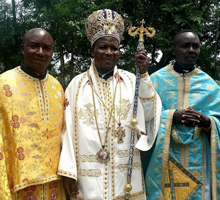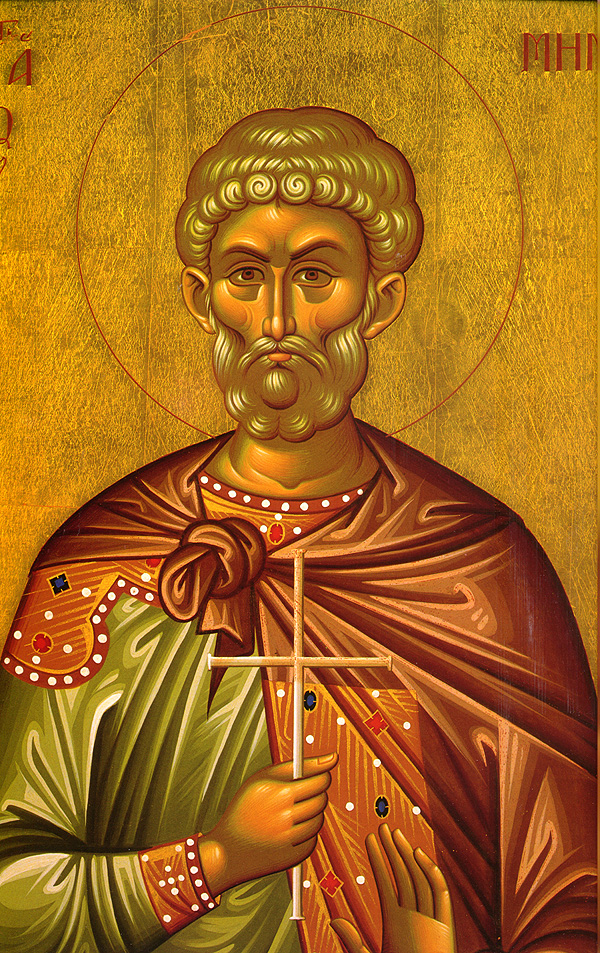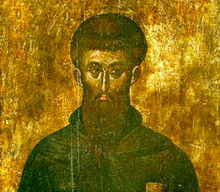Life & Faith
The Vulnerable and Poor, Whose Hope is in God Alone
 On the Successes and Difficulties of Mission Work in Africa
On the Successes and Difficulties of Mission Work in Africa
It was recently reported that His Grace Bishop Athanasius of Kisumu and Western Kenya of the Patriarchate of Alexandria fell seriously ill about a month ago and is in the ICU at St. Vincent Hospital in Worcester, MA. The news has spread quickly around social networks, and many have offered prayers and fond stories of Bp. Athanasius and the personal holiness they sense in him. Angel Karadakov, the founder of one of the most popular Bulgarian Orthodox websites, Dobrotuliuie, conducted a short interview with His Grace about five weeks ago, just before he fell ill, and Angel has graciously offered us the English text of the interview to publish.
Archpriest Alexander A. Winogradsky Frenkel: Who Are The Friends?
 MEMRA – WORDS, Meaning And Faith
MEMRA – WORDS, Meaning And Faith
A new 2018-19 series of articles shared on the roots and the prospects that unite Eastern and Oriental Oxthodox Traditions to the realm of Jewishness and Hassidism,
Compared semantics and exegetical “paysages” by archpriest Alexander A. Winogradsky Frenkel (Patriarchate of Jerusalem). Below the seventh article.
We really want, often are pleased to socialize with others. Nothing pathetically or gorgeously new. Just humans trying to meet, talk, “paltalk”, “messengerize” through wireless connections, the multi-faceted present-day online tools or letters or… who knows how we succeed to get in touch? This sounds highly computerized though our hearts and brains may prefer such a hype medium that may be “so very” but not “that real”. This kind of connections presupposes there might be a huge loose pith of loneliness to overcome and heal. Look, we were so close decades ago; and today we can search good the old schoolmates whom we have lost. Or life drifted away. Distance, destiny… what about friendship?
Martyr Menas of Egypt
 The Holy Great Martyr Menas of Egypt, an Egyptian by birth, was a military officer and served in the Kotyaeion region of Phrygia under the centurion Firmilian during the reign of the emperors Diocletian (284-305) and Maximian (305-311). When the emperors began the fiercest persecution against Christians in history, the saint refused to serve these persecutors. He removed his soldier’s belt (a sign of military rank) and withdrew to a mountain, where he lived an ascetic life of fasting and prayer.
The Holy Great Martyr Menas of Egypt, an Egyptian by birth, was a military officer and served in the Kotyaeion region of Phrygia under the centurion Firmilian during the reign of the emperors Diocletian (284-305) and Maximian (305-311). When the emperors began the fiercest persecution against Christians in history, the saint refused to serve these persecutors. He removed his soldier’s belt (a sign of military rank) and withdrew to a mountain, where he lived an ascetic life of fasting and prayer.
Once he happened to arrive in the city during a pagan festival. At the climax of the
Translation of the relics of the Venerable John of Rila
 The Transfer of the Relics of the Monk John of Ryla from the city of Sredets (Sofia) to the then capital of the Bulgarian realm – the city Tirnovo, took place in the year 1238. The Monk John of Ryl'sk – a great spiritual ascetic of the Bulgarian Orthodox Church and Heavenly Protector of the Bulgarian nation, was born in the year 876 in the village of Skrino in the Sredetsk district (ancient Sredets – is now Sofia). Early on having been left orphaned, the boy became a cowherd in the avoidance of people. One time the rich man beat him for losing a cow with its calf...
The Transfer of the Relics of the Monk John of Ryla from the city of Sredets (Sofia) to the then capital of the Bulgarian realm – the city Tirnovo, took place in the year 1238. The Monk John of Ryl'sk – a great spiritual ascetic of the Bulgarian Orthodox Church and Heavenly Protector of the Bulgarian nation, was born in the year 876 in the village of Skrino in the Sredetsk district (ancient Sredets – is now Sofia). Early on having been left orphaned, the boy became a cowherd in the avoidance of people. One time the rich man beat him for losing a cow with its calf...
Sermon on the Nativity of the Theotokos
The Church’s veneration of Mary has always been rooted in her obedience to God, her willing choice to accept a humanly impossible calling. The Orthodox Church has always emphasized Mary’s connection to humanity and delighted in her as the best, purest, most sublime fruition of human history and of man’s quest for God, for ultimate meaning, for ultimate content of human life.
 If in Western Christianity veneration of Mary was centered upon her perpetual virginity, the heart of Orthodox Christian East’s devotion, contemplation, and joyful delight has always been her Motherhood, her flesh and blood connection to Jesus Christ. The East rejoices that the human role in the divine plan is pivotal. The Son of God comes to earth, appears in order to redeem the world, He becomes human to incorporate man into His divine vocation, but humanity takes part in this. If it is understood that Christ’s “co-nature” with us is as a human being and not some phantom or bodiless apparition, that He is one of us and forever united to us through His humanity, then devotion to Mary also becomes understandable, for she is the one who gave Him His human nature, His flesh and blood. She is the one through whom Christ can always call Himself “The Son of Man.”
If in Western Christianity veneration of Mary was centered upon her perpetual virginity, the heart of Orthodox Christian East’s devotion, contemplation, and joyful delight has always been her Motherhood, her flesh and blood connection to Jesus Christ. The East rejoices that the human role in the divine plan is pivotal. The Son of God comes to earth, appears in order to redeem the world, He becomes human to incorporate man into His divine vocation, but humanity takes part in this. If it is understood that Christ’s “co-nature” with us is as a human being and not some phantom or bodiless apparition, that He is one of us and forever united to us through His humanity, then devotion to Mary also becomes understandable, for she is the one who gave Him His human nature, His flesh and blood. She is the one through whom Christ can always call Himself “The Son of Man.”
Saint Nahum of Ochrid, the Disciple of Sts Cyril and Methodius, Equal of the Apostles
 The feast of St. Naum of Ohrid, the Miracle Worker, is celebrated on July 3rd, to honor the medieval scholar and writer, together with St. Clement, is credited with building upon the work of the sainted brothers Cyril and Methodius to spread Christianity among the Slavic speaking peoples of Europe. Naum is known as the “living saint” for the numerous miracles that are attributed to him even today, centuries after his death in 910, at an age of 80 years.
The feast of St. Naum of Ohrid, the Miracle Worker, is celebrated on July 3rd, to honor the medieval scholar and writer, together with St. Clement, is credited with building upon the work of the sainted brothers Cyril and Methodius to spread Christianity among the Slavic speaking peoples of Europe. Naum is known as the “living saint” for the numerous miracles that are attributed to him even today, centuries after his death in 910, at an age of 80 years.

